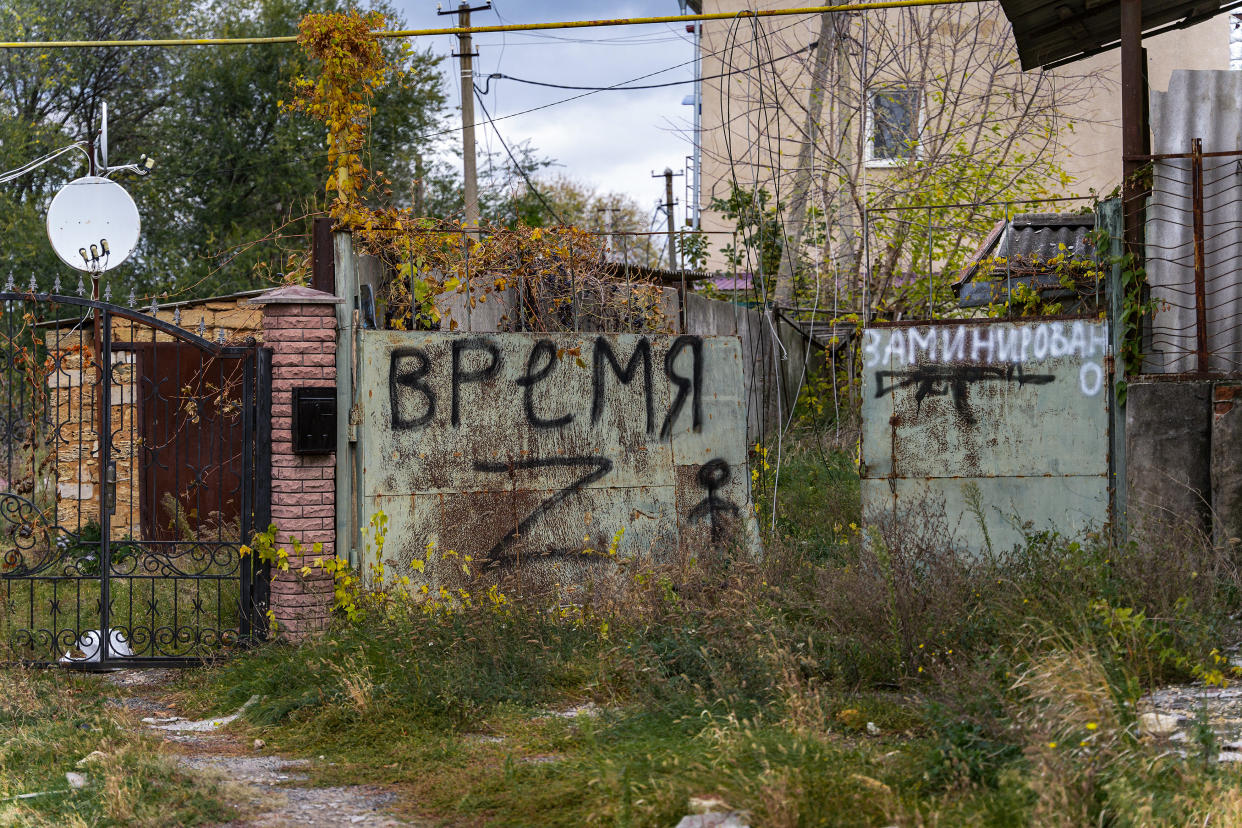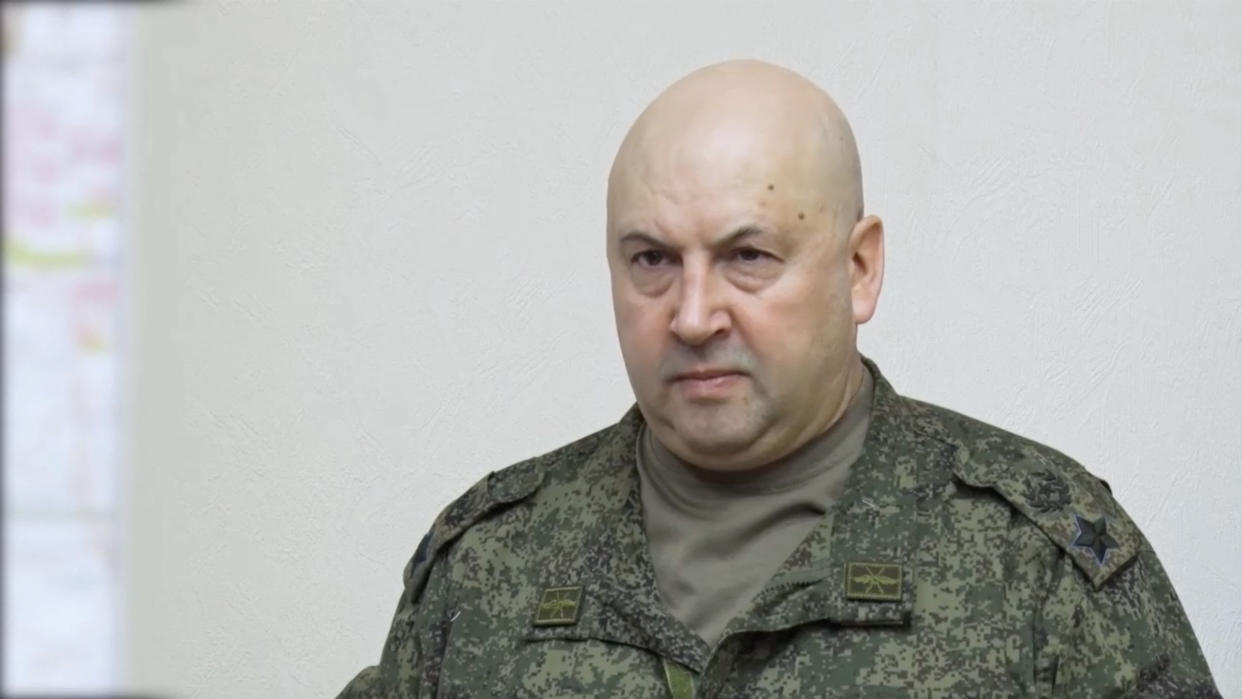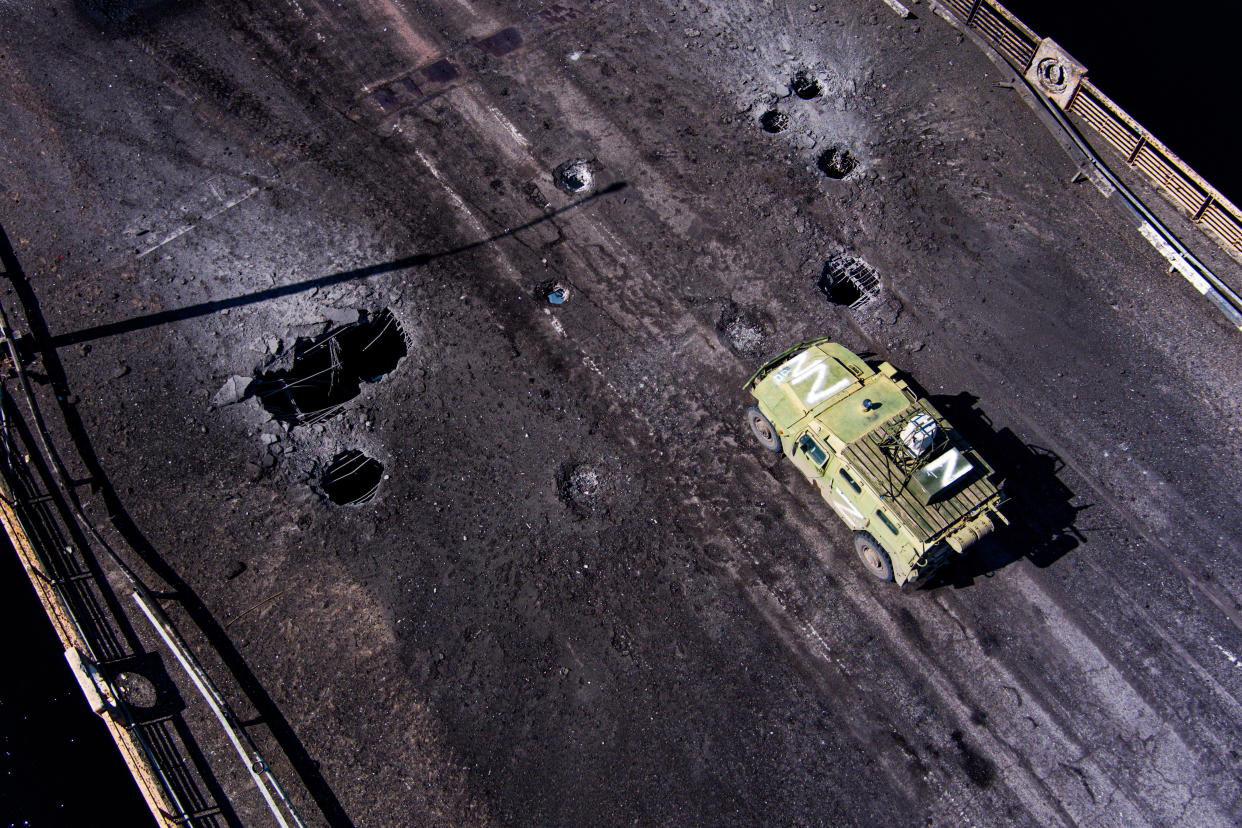Russia orders troops to withdraw from Kherson, but Ukraine is skeptical

KYIV — It had looked inevitable for weeks, maybe even months. Russia’s position on the west bank of the Dnieper River, which had been slowly but systematically reduced by the Ukrainian southern offensive launched on Aug. 29, was finally being officially abandoned on Wednesday, according to Sergey Surovikin, commander of Russian forces in Ukraine, and Russian Defense Minister Sergei Shoigu.
In a televised and clearly rehearsed conversation between the two men — where they talked repeatedly about the “priority given to the lives of Russian servicemen,” despite all the evidence to the contrary — Surovikin advised Shoigu that, after a “comprehensive assessment of the current situation,” he was recommending the Russian military retreat to defensive positions on the east bank of the Dnieper. Shoigu, of course, agreed.
Surovikin also argued that the troops freed up by Russia’s withdrawal from the west bank of the river could now be used in further offensive operations in other areas of Ukraine. He failed to point out this is also true for Ukraine’s forces: With the southern front secured and the threat to Mykolaiv, Odesa and Kryvyi Rih significantly reduced, Kyiv will be able to redeploy significant numbers of its own battle-hardened troops in future offensive operations in other directions.

Maybe suspecting this, it was revealed on Wednesday that Russia had begun constructing significant defensive lines and laying large minefields outside the devastated and now occupied city of Mariupol — a clear sign of Moscow’s nervousness about Ukrainian intentions in the South.
Although the decision was finally announced on Wednesday, it seems apparent it had been made several weeks ago. Russian forces had been systematically withdrawing both civilian and military personnel and looting anything of value in the occupied area on the west bank over the past month. Ukrainian government sources claimed that large numbers of poorly trained, recently mobilized Russian conscripts were being pushed in to cover the withdrawal of Russia’s more valuable regular military units.
The Ukrainian strategy had largely revolved around making the Russian positions on the “wrong” side of the river untenable, by systematically targeting and destroying — with Western-supplied long-range artillery, primarily the 80km-ranged HIMARS — the road and rail bridges Russia relied on to supply its forces. When the Russians built a pontoon bridge in parallel with the now impassable Antonovsky Road Bridge, the Ukrainians targeted that with HIMARS strikes too.

Earlier in the day, Ukrainian troops had been making advances to the north of the city of Kherson, entering the strategically important city of Snihurivka. Pictures of the Ukrainian flag flying high over the city were published on social media, while posts on Telegram from Russian soldiers fighting in the area drew a bleak picture for the Russians.
Russian forces had seemed to be making the final preparations for their pullout throughout the day. A number of bridges throughout the oblast were blown up Wednesday morning, and in a coincidence that only a cynic would find suspicious, Kirill Stremousov, whom Russian had installed as "deputy head of Kherson oblast," was allegedly killed in an automobile accident in the early afternoon.
However Russia tries to present it, there’s no doubt that with the withdrawal from Kyiv and other areas of northern Ukraine, the abandonment of Snake Island and the rout in the face of the recent Ukrainian “Kharkiv offensive,” Russia's retreat from the west bank of the Dnieper is the fourth major defeat its forces have suffered during their nine-month “special military operation.” It also means the abandonment of the only regional capital captured by the Russians since Feb. 24, and according to Russian law, now officially part of Russia after the sham referendums leading to the “annexation” of Kherson oblast on Sept. 30.
Ukrainian officials remained — understandably — skeptical of Russian intentions. “Actions speak louder than words,” Mykhailo Podolyak, senior political adviser to Ukrainian President Volodymyr Zelensky, posted on Twitter. “We see no signs that Russia is leaving Kherson without a fight.”
